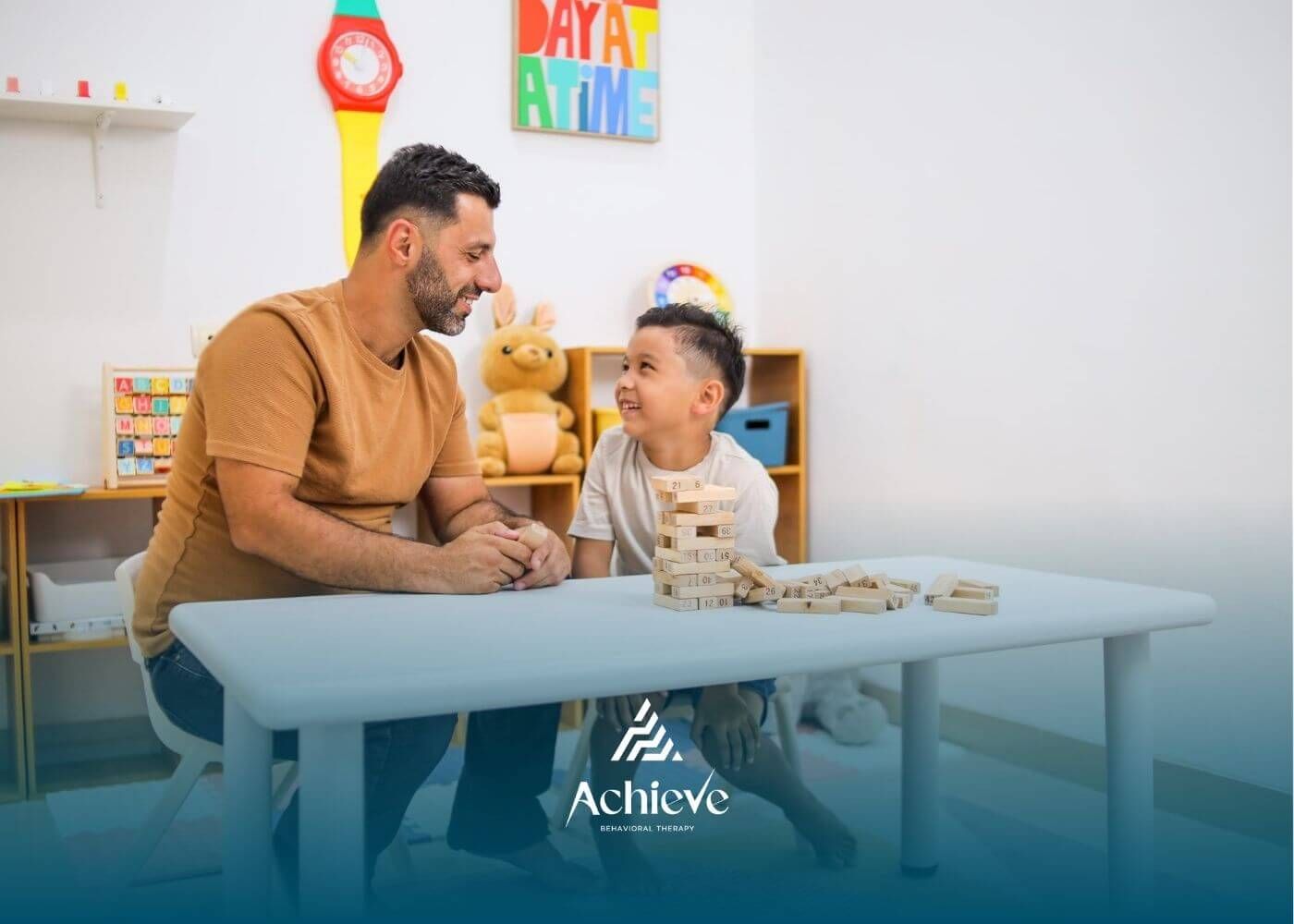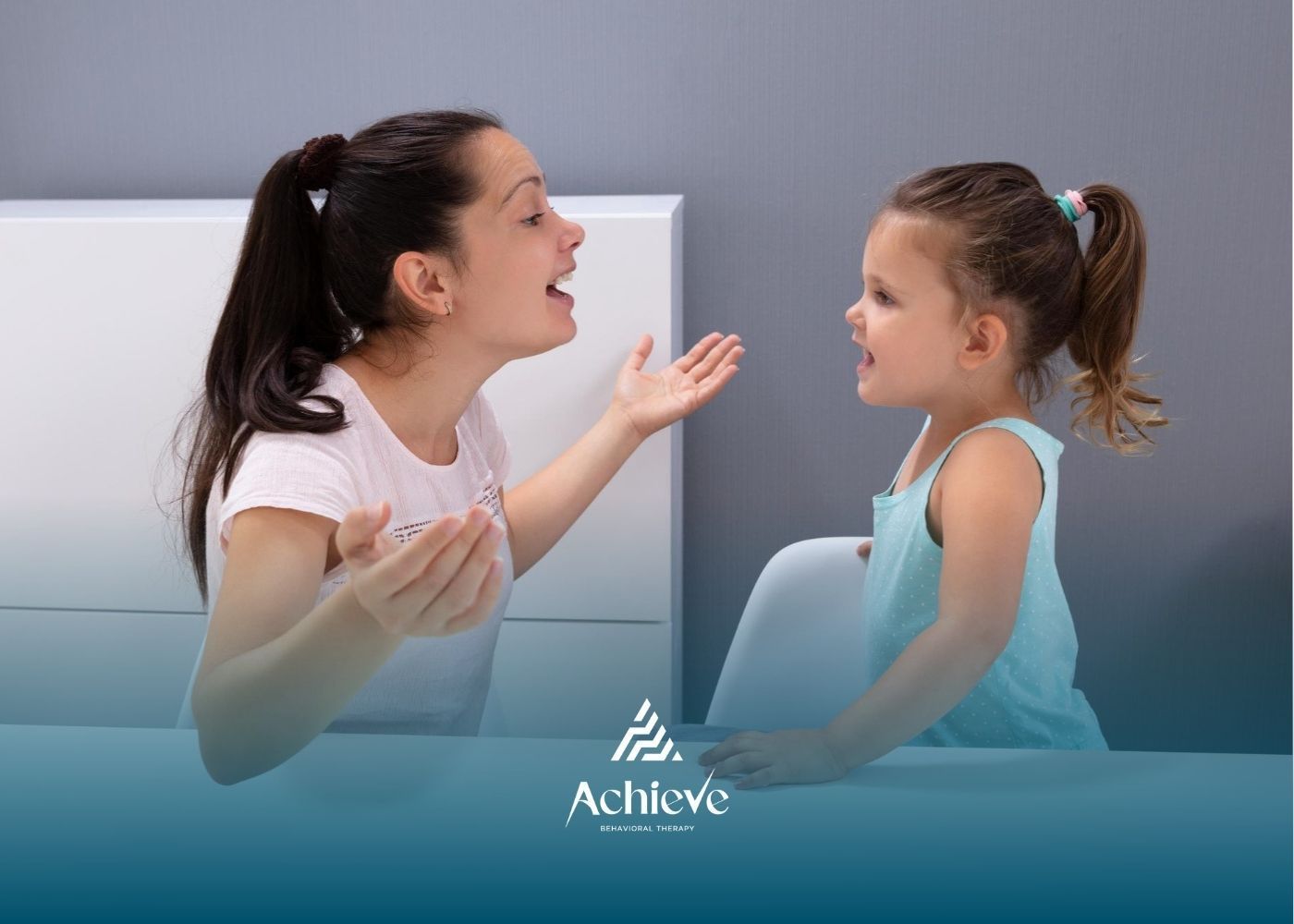How to Set Strong ABA Therapy Goals for Your Child

Key Highlights
- Setting clear and specific ABA goals is the foundation of effective ABA therapy.
- Goal setting should be collaborative—parents, therapists, and educators all contribute.
- Goals should be based on a careful assessment of your child’s current skills and needs.
- SMART goals (Specific, Measurable, Achievable, Relevant, Time-bound) make progress easier to track.
- Ongoing data collection helps guide behavior plans, measure success, and adjust goals as needed.
- ABA goals should target real-life skills like communication, social interaction, self-help, and independence.
When you’re starting ABA therapy, one of the first questions is usually: “What should we be working on?” The answer comes from good goal setting. Clear ABA therapy goals give every session direction and purpose.
In practice, that means turning a big goal like “better communication” into something specific and doable, like “will ask for help using a short phrase 4 out of 5 times.” Goals like this help your child build meaningful skills step-by-step, and they give you a way to see progress and celebrate it.
In the guide below, I’ll walk you through how ABA goals are created, what makes a good goal, how to get involved in the process, and how to track growth over time.
Understanding ABA Goals for Kids
ABA therapy goals are the roadmap for learning. They define exactly what skill we’re building, how we’ll measure it, and how we’ll know when your child has mastered it. This section explains why those goals matter and how they support real-world independence.
What ABA Goals Are (and Why They Matter)
In ABA therapy, a goal isn’t something vague like “improve communication.” Instead, it might say: “The child will request a toy using a three-word phrase in 4 out of 5 opportunities.” That level of clarity is powerful.
Well-written ABA goals:
- Give your child a clear target
- Break complex skills into smaller, teachable steps
- Help everyone (therapists, teachers, caregivers) work consistently
Strong goals are always connected to quality of life. We’re not just teaching isolated behaviors—we’re working toward functional independence, social connection, safety, and confidence.
The Role of Goal-Setting in ABA Therapy
Goal-setting is what drives ABA therapy forward. Without a clear goal, you can’t measure progress. With a clear goal, you can measure, adjust, and build momentum. This section covers how goals guide daily therapy and how we keep those goals meaningful.
Why Goal-Setting Is Essential in ABA
In Applied Behavior Analysis, each behavior plan is built around measurable outcomes. Goals tell us:
- What we’re teaching
- How we’ll teach it
- How we’ll know it worked
Because each goal is measurable, we can collect data during sessions, look at trends, and make real-time decisions. If something isn’t working, we don’t guess—we adjust. That’s one reason ABA is considered evidence-based: choices are driven by data, not guesswork.
How Goals Keep Therapy Flexible
No two children follow the exact same path. As your child grows, their needs change. Regular goal review allows the team to ask:
- Is this still the right target?
- Is the skill generalizing to new places (home, school, community)?
- Do we need to change how we’re teaching it?
This flexibility keeps therapy relevant and responsive instead of “one-size-fits-all.”
Types of Skills Targeted by ABA Goals
ABA goals are highly individualized and based on what will most benefit your child in daily life. In this section, we’ll look at common areas that are often targeted in ABA therapy goals for kids.
Common ABA Goal Areas
Here are some of the core skill areas we typically write goals for:
- Communication skills:
Requesting items, asking for help, answering questions, using words or AAC (communication devices). - Social skills:
Turn-taking, joining play, greeting peers, keeping a short conversation going. - Emotional regulation and coping:
Using calming strategies, asking for a break instead of melting down, identifying feelings. - Daily living / self-help skills:
Brushing teeth, dressing, washing hands, packing a backpack. - Academic readiness skills:
Following classroom routines, attending to instruction, basic reading or counting goals. - Behavior support / behavior reduction:
Replacing challenging behavior (like yelling or hitting) with safer, more appropriate communication.
The goal is not to “fix” a child. The goal is to build skills that support independence, confidence, and access to their world.
Key Principles of Effective ABA Goal Setting
Not all goals are created equal. Strong ABA goals are clear, measurable, realistic, and meaningful. In this section, we’ll break down what “good” looks like.
The SMART Goal Framework in ABA
One of the most reliable tools we use is the SMART framework. SMART ABA goals are:
- Specific – The goal targets one skill or behavior.
- Measurable – We can count it, time it, or score it.
- Achievable – It fits where the child is right now.
- Relevant – It matters in daily life.
- Time-bound – There’s a time frame or mastery criteria.
Example of a SMART ABA goal:
“Jax will greet a peer by name with ‘hi [name]’ in 3 out of 4 opportunities during recess across two consecutive school days.”
Why this works:
- Everyone knows exactly what “success” looks like.
- It’s trackable.
- It fits into a real environment (recess).
- It’s socially meaningful.
Short-Term vs. Long-Term ABA Goals
In ABA therapy, we usually write both short-term and long-term goals. This section explains how those two levels work together to build real progress without overwhelming the child.
How Short-Term and Long-Term Goals Work Together
- Short-term ABA goals are the stepping stones.
These might last a few weeks to a few months and focus on one small, specific behavior. - Long-term ABA goals describe the bigger outcome.
These can take months or longer and reflect broader independence.
Here’s how they compare:
| Aspect | Short-Term Goals | Long-Term Goals |
|---|---|---|
| Timeframe | Weeks to a few months | Several months to a year (or more) |
| Focus | One specific skill (e.g. “zips jacket with help”) | Broader ability (e.g. “dresses independently for school”) |
| Purpose | Build the building blocks | Define the overall vision |
| Example | “Will point to desired object to request help” | “Will use short phrases to communicate needs and wants” |
Short-term wins keep motivation high. Long-term goals remind us why we’re doing the work.
Factors to Consider When Choosing ABA Goals
Setting the “right” goals is just as important as how we write them. This section focuses on what to think about when deciding what to target first.
How to Choose Which Goals Matter Most
When creating ABA therapy goals for a child, the team usually looks at:
- Current skill level and developmental stage
- Safety and independence needs
- Communication needs (Can they ask for help? Can they say “no”?)
- Social opportunities (Do they want to connect with peers?)
- Daily routines that are stressful for the family
- The child’s own interests and motivation
Parent input here is huge. You see needs across bath time, homework time, meals, bedtime, and community outings. Your voice helps shape the most meaningful targets.
Collaborating With Your ABA Team
ABA goal-setting is a team effort. This section explains who’s involved and why that collaboration matters for real-world progress.
How Parents and Caregivers Can Take Part
Your insight matters. You know your child’s strengths, triggers, and daily routines better than anyone. You can help:
- Identify priority skills (“Mornings are a struggle” or “I want them to ask for breaks instead of crying”)
- Report what strategies work at home
- Practice skills outside of sessions to help with generalization
Parent training and regular check-ins keep goals aligned with what your family actually needs—not just what looks good on paper.
Why Teachers and Other Therapists Should Be Involved
When teachers, ABA therapists, speech therapists, and occupational therapists are all on the same page, kids get consistency. That consistency helps skills transfer across settings.
In school, ABA-related goals can also be written into an IEP (Individualized Education Program). That allows classroom staff to work toward the same targets you’re working on in therapy, using similar supports and language.
How to Get Started Setting ABA Goals
If you’re new to ABA, goal-writing can feel technical. In this section, I’ll walk you through the basic process we use so you can recognize good practice and feel confident asking questions.
Step 1: Assess Current Skills
First, we figure out where your child is right now. That usually includes:
- Observation
- Direct interaction/teaching trials
- Parent interview
- Sometimes standardized assessments
We’re looking at communication, social behavior, self-help skills, attention, regulation, and more. This baseline tells us what to target next.
Step 2: Prioritize What Matters Most
We can’t work on everything at once—and we shouldn’t. We usually choose targets that affect safety, independence, or day-to-day stress first. For example: responding to name, asking for help, transitioning without a meltdown, toileting, following a morning routine.
Picking a manageable number of goals avoids overwhelm and creates early wins.
Step 3: Write SMART Goals
Now we write the actual goals in SMART format. For example:
“Benny will independently put on his shirt each morning for five consecutive school days.”
This is specific, measurable, realistic, functional, and time-based.
Step 4: Review and Finalize as a Team
Before goals are considered “active,” the full team reviews them—including parents. This is where you can say, “This is important,” or “This doesn’t feel like a priority right now.”
Goals are not permanent. As your child meets certain goals (or hits a wall with others), we edit.
Tracking Progress and Updating ABA Goals
Once goals are in place, we don’t just hope for progress—we track it. This section is all about how we monitor growth and when we decide to adjust.
How Progress Is Measured in ABA Therapy
During therapy sessions, data is collected on each target skill. That might include:
- Frequency recording: How often something happens
- Duration recording: How long it lasts
- Accuracy/independence: How often a skill is completed without prompts
That data is then graphed so we can literally see improvement over time.
What Happens If Progress Slows
If progress stalls, that’s normal. We ask questions like:
- Is the goal too big? Should we break it into smaller steps?
- Is the reinforcement motivating enough?
- Are we teaching the skill in the right environment?
- Is this still the right goal for right now?
At that point, we can modify the goal, change the teaching strategy, or redefine mastery criteria. The goal is always to set the child up to succeed.
Conclusion
Setting strong ABA goals is one of the most meaningful things you can do to support your child’s growth. Good goals are clear, realistic, and focused on skills that actually matter in everyday life.
The process is collaborative: you, your child’s ABA team, and (when appropriate) school staff all work together to identify priorities, create SMART goals, monitor progress, and adjust as your child develops.
Most importantly, goal-setting in ABA is not about perfection. It’s about progress—one achievable step at a time—toward more confidence, more independence, and more ease in daily routines.
At Achieve ABA, we understand that every child’s journey is unique. Our team specializes in creating personalized ABA therapy plans that include clear, measurable goals for success. We offer:
- In-home ABA therapy to support learning where it matters most.
- School-based ABA programs to align therapy with classroom goals.
- Telehealth ABA sessions for flexible, convenient care.
We proudly serve families across:
If you’re ready to create meaningful ABA goals and see real progress, contact our compassionate team at Achieve ABA. Together, we’ll help your child build confidence, independence, and lifelong skills—one goal at a time.
FAQs
What are ABA therapy goals?
ABA therapy goals are specific, measurable objectives that guide learning. They describe what skill is being taught, how it will be measured, and when it’s considered mastered.
Why are ABA goals important?
Without clear goals, it’s hard to track progress. ABA goals create a plan so the entire team can work toward the same outcomes and evaluate what’s working.
What does a SMART goal mean in ABA?
SMART stands for Specific, Measurable, Achievable, Relevant, and Time-bound. SMART ABA goals make progress more trackable and reduce confusion about what success looks like.
Sources:
- https://www.ed.gov/sites/ed/files/parents/needs/speced/iepguide/iepguide.pdf
- https://pmc.ncbi.nlm.nih.gov/articles/PMC6796229/
- https://onlinelibrary.wiley.com/doi/10.1002/bin.2041
- https://www.richtmann.org/journal/index.php/jesr/article/view/12943
- https://www.sciencedirect.com/science/article/abs/pii/S3050656525001981
Need Support?
We're Here to Help!
Our experienced team is ready to assist you. Reach out today to discuss how we can support your child's development and well-being.
Get started with expert ABA therapy today.













